Here’s a round up of exhibitions throughout the US that are worth traveling to see. They are listed in date order — a few of them close this month or next; others are open through the fall.
Philadelphia, Pennsylvania
Craft Spoken Here
Last Week – through August 12th

Artists in the exhibit include: clockwise; WATERFALL by Lenore Tawney; SPIRALS AND PATHS by Rebecca Medel; CERAMIC 42 by Yasuhisa Kohyama; BODY LANGUAGE by John McQueen; SEASIDE by Krystyna Wojtyna-Drouet; RAY by Mary Merkel-Hess
With Craft Spoken Here, curated by Elisabeth Agro, the Nancy M. McNeil Associate Curator of American Modern and Contemporary Crafts and Decorative Arts, the Philadelphia Museum of Art seizes the opportunity to experiment with its craft collection and to understand craft in an international context. Some 40 contemporary works from 1960 to the present in ceramic, glass, metal, wood, lacquer, paper and fiber—some by living, acclaimed artists, including Lenore Tawney, Rebecca Medel, Yasuhisa Kohyama, John McQueen, Krystyna Wojtyna-Drouet, and Mary Merkel-Hess and others by lesser-known creators—are on view. Representing the Americas, Africa, Asia and Europe, the works highlight formal qualities that cross cultures, time, and media. Hear Agro describe the evolution of the exhibition and the installation of Tawney’s Fountain of Water and Word, in a podcast at the art blog.
Philadelphia Museum of Art
Perelman Building
2525 Pennsylvania Ave
Philadelphia, PA 19130
phone 215.763.8100
www.philamuseum.org
Myrtle Beach, South Carolina
At First Light: The Katagami Sculpture of Jennifer Falck Linssen
through September 16, 2012
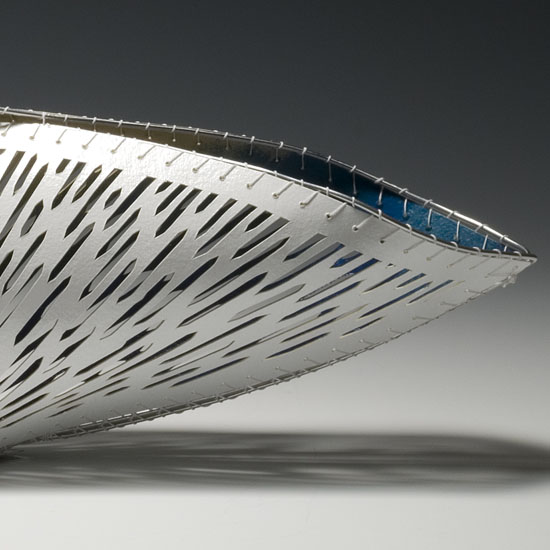
Handcrafted vessel of katagami-style handcarved paper. Materials include archival cotton paper, aluminum, waxed linen, paint, varnish, freshwater pearl, and sterling silver.
Utilizing the ancient Japanese paper carving technique of katagami, Colorado-based artist Jennifer Falck Linssen creates three-dimensional sculptures that explore the beauty of line and the delicacy of nature. Since 2003, Jennifer has been shaping katagami stencils into three-dimensional vessels and sculptures, combining the katagami paper carving with more traditional metal-smithing and basketry techniques to create contemporary sculptures that transform the two-dimensional stencil into a unique three-dimensional art form.
Myrtle Beach Museum of Art
3100 South Ocean Boulevard
(across from Springmaid Pier)
Myrtle Beach, SC 29577
phone 843.238.2510
fax 843.238.2910
www.myrtlebeachartmuseum.org
East Hampton, New York
Accumulations NOW
through October 6th
Accumulations: NOW bills itself as, “[s]imply, the best of craft. NOW.” Cuurated by Jack Lenor Larsen, the exhibition at LongHouse Reserve features 500 works made in the last 100 years, including a number of important pieces from the collection of the late Dena Katzenberg. Artists shown in the NOW collections include, in fiber Anni Albers, Jun-ichi Arai, Dawn MacNutt, Ed Rossbach, Peter Collingwood, Ethel Stein, Helena Hernmarck and Chunghie Lee; in clay Hans Coper, Toshiko Takezu and Peter Voulkos; hollowware by Chunghi Choo; and furniture masters including Judy Kensley McKie and Edward Wormley. You can see the exhibition catalog and installation shots, here: Accumulations_Now_Catalog.pdf and here: http://www.longhouse.org
LongHouse Reserve
133 Hands Creek Road East Hampton, NY 11937
phone 631.604.5330
http://longhouse.org
San Francisco, California
Fiber Futures: Japan’s Textile Pioneers
Part one through October 6th
Part two October 13 – December 29th
If you missed this remarkable exhibition last fall at the Japan Society in New York (or in an earlier incarnation in Japan) you’ve got another chance. Fiber Futures explores a new art that is emerging from a remarkable fusion of Japanese artisanal and industrial textile making. Coaxed from materials as age-old as hemp and newly developed as microfilaments, a varied array of works by 30 artists from multiple generations, including Hisako Sekijima, Takaaki Tanaka, Naoko Serino, Hideho Tanaka, Naomi Kobayahsi and Kyoko Kumai, are on view in this important two-part exhibition.
Museum of Craft and Folk Art
51 Yerba Buena Lane
San Francisco, CA 94103
phone 415.227.4888
http://www.mocfa.org
Minneapolis, Minnesota
In Our Nature: Tapestries of Helena Hernmarck
through October 14th
In Our Nature: Tapestries of Helena Hernmarck, is an assemblage of 19 large-scale tapestries by legendary trompe-l’oeil weaver, Helena Hernmarck. Monumental works immerse the viewer in the best of nature: lush blooms, rich green forest scenes, and sunny poppy pastures. Hernmarck’s work represents a lifetime of closely honed weaving technique that combines intensely sensitive attention to color with one-of-a-kind combination of textures creating layered, shaded effects. The tapestries in In Our Nature: Tapestries of Helena Hernmarck are on loan from three major arts museums, several corporate and individual collectors, and from Hernmarck’s own collection.
American Swedish Institute
2600 Park Avenue
Minneapolis, MN 55407
phone 612.871.4907
http://www.asimn.org

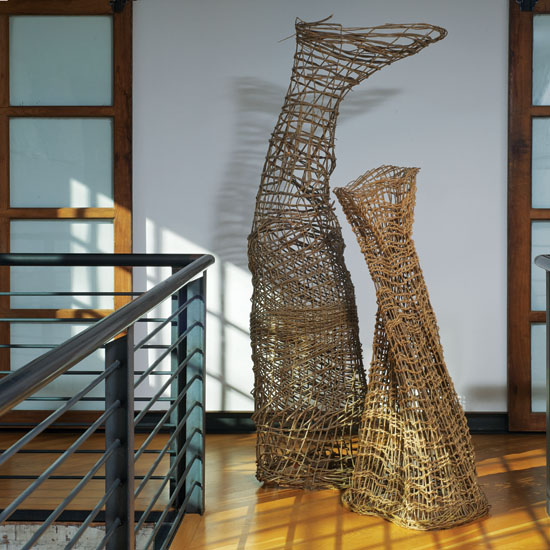

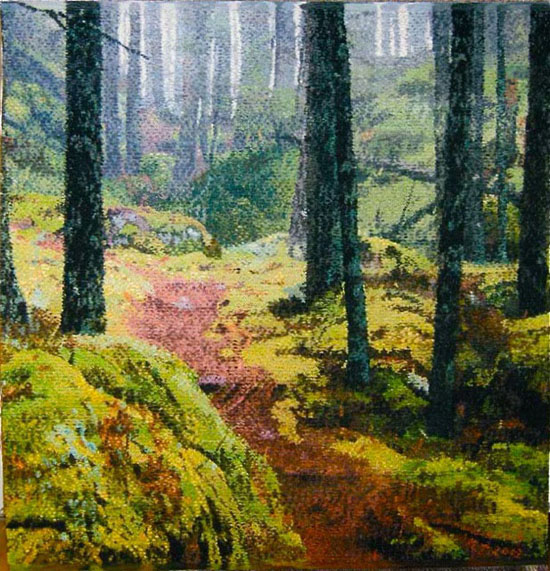
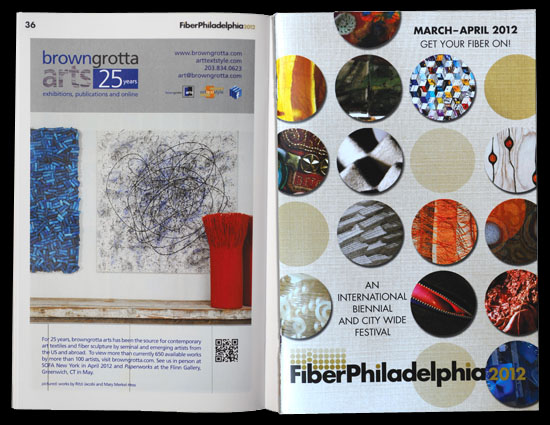
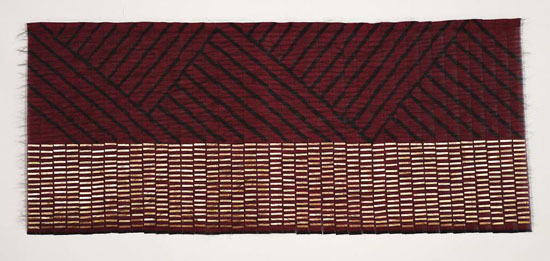



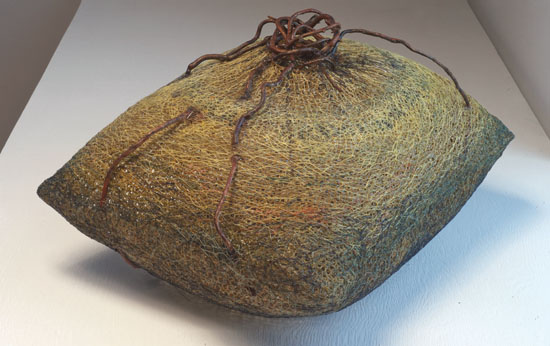


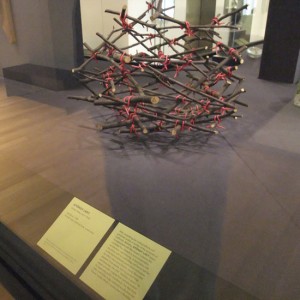

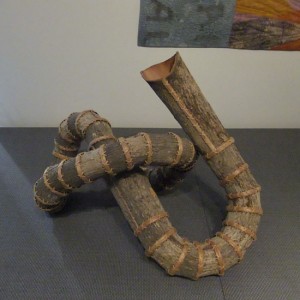
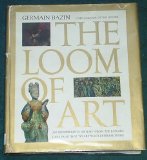
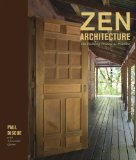


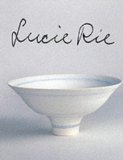
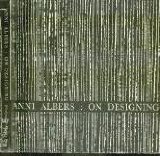



Books Make Great Gifts 2011: Artist Recommendations
This year we asked the artists we represent just one question:
What was the most enjoyed/most inspirational book you read this year?? Here are their wide-ranging replies:
The Absolutely True Diary of a Part-Time Indian by Sherman Alexie, illustrated by Ellen Forney (Little, Brown; National Book Award) . This is a semi-autobiographical novel by award-winning author, poet and film-maker, Sherman Alexie. Alexie has been named one of Granta’s Best Young American Novelists and has been lauded by The Boston Globe as “an important voice in American literature.” He is one of the most well-known and beloved literary writers of his generation, with works such as Reservation Blues and War Dances. He also wrote the screenplay for the film, Smoke Signals, based on a short story from his book, Lone Ranger and Tonto Fistfight in Heaven. In his novel, Alexie tells the heartbreaking, hilarious, and beautifully written story of a young Native American teen, Arnold, as he attempts to break free from the life he was destined to live. Arnold’s drawings illustrate the book.”
Sensual Relations by David Howes (University of Michigan) is Deborah Valoma’s recommendation.